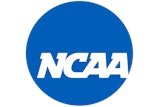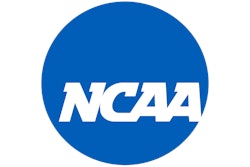Two Michigan schools overcome anxieties and open new rec facilities to the public.
During his 38 years as a teacher, coach and athletic administrator for Huron Valley Schools in Highland, Mich., Gene Balawajder watched dejectedly as at least three referenda aimed at improving local high school athletic facilities failed. But in late September 2001, district officials finally convinced voters to approve a bond measure to finance the construction of two identical indoor facilities that would considerably raise the profile of Highland's Milford High School and White Lake's Lakeland High School.
"We're in the fight for students, and everybody was well aware that the communities around us had better facilities than ours," says Balawajder, now Milford's athletic director. "When I was a coach, I was always jealous that my colleagues could do cross-training and aquatic training with their teams. I looked at those guys as having an advantage. Well, now we've leveled the playing field."
They've done it by adding a synthetic playing field, plus several outdoor baseball, softball and physical-education fields -- all of which opened since 2002. The crowning touch came last summer, though, when twin $13.3 million fitness centers and natatoriums with competition and leisure pools opened their doors to students and residents of the four municipalities served by the district, as well as to members of other surrounding communities. The 98,500-square-foot facilities are believed to be the state's first such public facilities operated by a school district.
Each one boasts a 5,000-square-foot fitness center with strength-training and cardiovascular equipment, a 1/9-mile indoor track, a field house, a 25-yard-by-25-meter competition pool with two diving boards and a 13-foot well, and a leisure pool with two-story enclosed water slides that wind outside the buildings. The theme of each leisure park -- a jungle at Milford and outer space at Lakeland (see "Variations on a theme," p. 44). -- was designed with input from committees representing students from the district's elementary, middle and high schools.
Membership fees range from $80 to $600, based on duration, number of individuals and residency. District officials initially were hoping to generate 600 or 700 memberships, but since opening, the facilities have attracted 1,700 individual, two-person and family memberships for a total of more than 5,000 members. And there is still room for many more, according to Paul DeAngelis, a former principal at Milford and now director of community school/recreation facilities for Huron Valley Pools & Fitness, the newly developed arm of the school district that oversees operations at both facilities.
"In the morning, the jogging track has 30 or 40 senior citizens walking around while physical-education classes are going on down below," DeAngelis says. "The fitness center is open when classes are going on, but there's plenty of room and plenty of supervision. And we leave a lane open in the competition pool, so if someone wants to come in and swim laps while P.E. classes are in progress, they can."
Truth be told, Huron Valley's massive undertaking worried the athletic directors at both schools. Balawajder had visions of strangers wandering the halls, partaking in random acts of vandalism, disrupting classes and stealing school property.
"When you bring in community members, there are always worries about what can go wrong," says Greg Michaels, Lakeland's athletic director. "We could anticipate them and prepare for them, but we decided not to stress out over them."
In the end, neither Balawajder nor Michaels needed to worry. Each school employs approximately 100 full-time and part-time staff members in the pool and fitness areas -- administrators, attendants, lifeguards and security personnel who keep things running smoothly. "It has worked out much better than I thought it would," Balawajder says. "But as with anything that's new, things pop up that you never thought of." It became clear early on, for example, that the schools needed to develop and enforce dress codes for their non-student members.
"I think the most difficult part has been dealing with construction-related issues," DeAngelis says. "We're still working with punch-list items. They haven't interfered with our operations, but we were delayed in construction and pressed to open the facilities last summer. So we did extend ourselves, and not everything went the way we promised it would."
Michaels recalls having to shut down a volleyball clinic in Lakeland's new field house shortly after it opened when the local fire marshal discovered it wasn't ready for public use. More lights also needed to be installed in both field houses, an expense covered with leftover money from the bond issue.
Despite construction-related glitches, the most significant adjustments have been required of coaches, who now need to share their space. With typical pool and fitness center hours running from 5 a.m. to 9:30 p.m. during the week and from 7 a.m. to 7 p.m. on weekends, there is little time left for coaches to schedule impromptu practices or weight-training sessions and expect privacy. "Gone are the days when they had everything to themselves," Balawajder says. "They had a key, they came in and their teams used the facility whenever they wanted to. Now things have to be scheduled in advance."
Student-athletes still take priority, though, and both Milford and Lakeland have created new opportunities for students who previously weren't involved in high school sports with the formation of competitive swim teams. The facilities have also generated an overwhelming sense of pride that permeates both schools. "Students, whether they're athletes or not, appreciate what they have, and it has raised the level of professionalism inside the school in terms of behavior, attendance and spirit," Michaels says. "I'm proud of what is going on here."
Similar community projects are in the works at high schools around the country. Last month, the Germantown (Wis.) School Board asked voters for permission to sell $4.4 million in municipal bonds for construction of an addition to Germantown High School that would include an eight-lane competition pool and a smaller leisure pool to replace a 38-year-old swimming pool. (That facility was shut down in January after it began leaking 1,600 gallons of water per hour.) And at Thousand Oaks (Calif.) High School, the Conejo Valley Unified School District and the Conejo Recreation and Parks District recently teamed up to renovate an outdated L-shaped pool and open it to the public. As of this writing, Pool Our Funds, a $150,000 community campaign to purchase equipment needed to sponsor water polo, diving and swimming programs at Thousand Oaks High, was nearing completion.
Good for them, says DeAngelis, who is striving to develop ways to bring in financial support from the municipalities served by Huron Valley Pools & Fitness. Potential ideas include creating a recreation authority or implementing a recreation millage. "It's a difficult task," he says. "When you're talking with multiple bodies of government, you're not going to get them all to agree to something like that. But maybe we can levy a quarter-mill or a half-mill against property values to offset operational costs. That way, an annual family membership that now costs $480 may cost considerably less, because we'd have tax dollars to support operations. It's hard to get people to understand that bond dollars can be used for construction costs but they can't be used for operational costs."
Despite the operational obstacles, Michaels and Balawajder have embraced the dramatic changes to the way they run their athletic programs. "We've had challenges every day," Balawajder says. "But I wouldn't trade it for the old days."




































